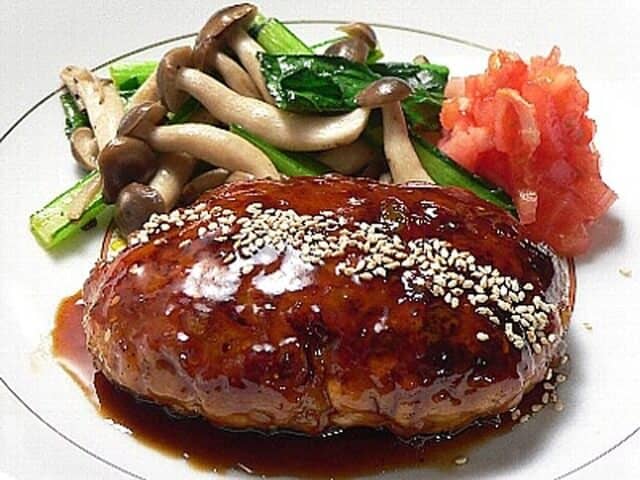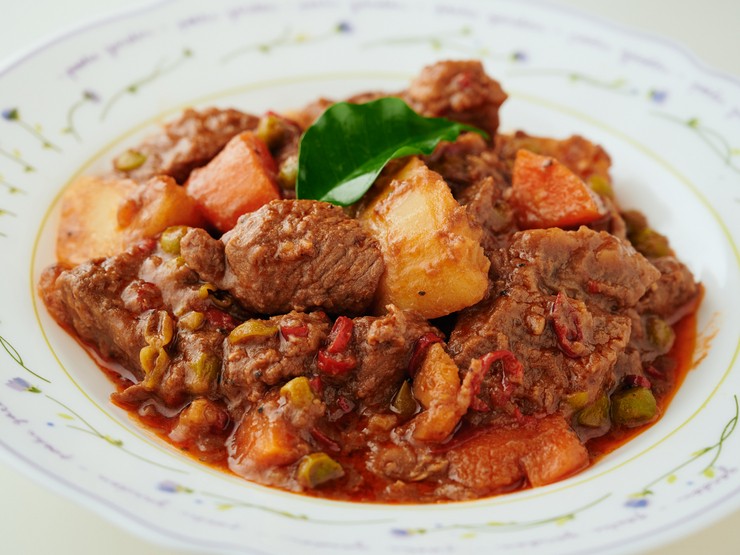Juicy, flavorful, and loved by all ages, Hamburg steak (hanbāgu) is a staple of Japanese comfort food. Hamburgers are a staple dish not only in home cooking but also when eating out at restaurants and other establishments. Known to be popular with a wide range of generations, from adults to children. Juicy, flavorful, and loved by all ages, Hamburg steak (hanbāgu) is a staple of Japanese comfort food. While inspired by Western cuisine, Japan has given it a unique twist, making it a beloved dish found everywhere, from family restaurants to home kitchens. However, while hamburgers are popular with many people, not many people know about the origin of the name or where it came from. Want to know how this dish became a household favorite in Japan? Keep reading to uncover its history, flavors, and cultural significance!
What is Hamburg steak?

Hamburg steak is a meat dish made by mixing ground meat with bread crumbs, onion, egg, etc., and grilling it flat. In Japan, it is a staple of Western cuisine and is a popular menu item in homes and restaurants. People usually eat hamburg steaks with demi-glace sauce. However, ponzu sauce with grated daikon radish and onion sauce is also often used, and there are many variations in sauces.
There are also many types of toppings. In addition to the classic toppings such as cheese and fried egg, there are also Japanese-style toppings such as mushrooms and radish and strong toppings such as garlic slices and green onion salt.
Which Country Invented the Hamburger?

People generally consider hamburgers an American dish, but their origins trace back to Germany. Cooks make Hamburg steak by mixing ground meat with breadcrumbs, eggs, and seasonings, then shaping and grilling it. German immigrants brought this dish to the United States in the 19th century, where it evolved into the modern hamburger. Because of this, it shares similarities in both shape and flavor with the original German Hamburg steak. Over time, people around the world, including in the United States, have created many variations, adapting hamburgers to fit their local food cultures.
Reference: Oimachi Zeniba Butcher Shop
Hamburg steak History

Hamburg steak likely arrived in Japan during the early Meiji period, around the time of the Meiji Restoration, when the ban on eating meat was lifted, and Western culture began influencing Japanese cuisine. Initially, people referred to it as “German balls,” “mince balls,” or “minchibo,” as seen in historical cookbooks and even in Natsume Soseki’s I Am a Cat.
Hamburg steak gradually gained popularity in Japanese households from the Taisho era through the mid-Showa era (1950s). Since beef was expensive, minced meat provided an affordable alternative, making it a practical home-cooked meal.
The first pre-cooked Hamburg steak appeared in 1962, and by the 1980s, thanks to the spread of refrigerators and frozen food, it had become a staple of Japanese home cooking.
Difference between German Hamburg and Japanese Hamburg steak

The key differences between German Hamburg steak and Japanese Hanbāgu lie in their ingredients, preparation, and serving style. German Hamburg steak is traditionally made from coarsely ground beef, sometimes mixed with pork, and seasoned simply with salt, pepper, and onions. It is typically pan-fried or grilled and served as a standalone patty, often accompanied by potatoes or vegetables, with little to no sauce. In contrast, Japanese Hanbāgu uses a blend of ground beef and pork for a softer, juicier texture. The mixture includes breadcrumbs, eggs, milk, and sautéed onions to enhance flavor and moisture.
Where Does the Word “Hamburger” Come From? Exploring Its Origin and Meaning

Hamburg Steak Originated in Germany
When people think of hamburgers, they often associate them with America. However, the most widely accepted theory traces its origins to Germany. Historically, Germans prepared a dish called “steak tartare” by chopping raw meat and grilling it. In the early 19th century, German immigrants brought this dish to America, where it gained popularity under the name “hamburger steak.”
The Name Comes from “Hamburg”
Several theories exist about the origin of the name “hamburger,” but the most commonly links it to Germany. One explanation suggests that the dish was named after Hamburg, a major port city in northern Germany. Since many German immigrants traveled to America from Hamburg, people began calling it “hamburger steak” to indicate its place of origin.
“Hamburger” Is a Term Unique to Japan
In Japan, people commonly use the word “hamburger” to refer to Hamburg steak. However, this term is unique to Japan and may not be easily understood in other countries.
In English-speaking regions, the correct terms are “Hamburg steak” or “hamburger steak.” A similar dish, known as “Salisbury steak,” consists of minced meat shaped into a patty and topped with gravy sauce.
Reference: Kobeya Shop
FAQ
Because it’s hard for the heat to reach the center. If you press the center down a bit before cooking, it cooks more evenly.
Use a mix of beef and pork, knead well to remove air, sear the surface thoroughly, then cook on low heat until fully done inside.
Because making them flat and oval makes them easier to cook and helps the heat reach the center more easily.
Summary
Hamburg steak is a delicious part of Japan’s food culture that blends Western influences with Japanese creativity. They are affordable, delicious, and a surefire hit, and are popular among families and people of all ages. They are popular not only in restaurants, but also at home. Whether you try it at a local family restaurant, a specialty hanbāgu shop, or even as a ready-made meal from a supermarket, there are countless ways to enjoy this savory dish. If you ever visit Japan, don’t miss the chance to taste an authentic hanbāgu and experience its rich flavors for yourself!
If you enjoyed learning about Hamburg steak, you might also love trying other Japanese-style Western dishes like omu-rice (omelet rice), katsu curry, or naporitan spaghetti—each offering a unique twist on familiar flavors!

 20 hours ago
7
20 hours ago
7










 English (US) ·
English (US) ·